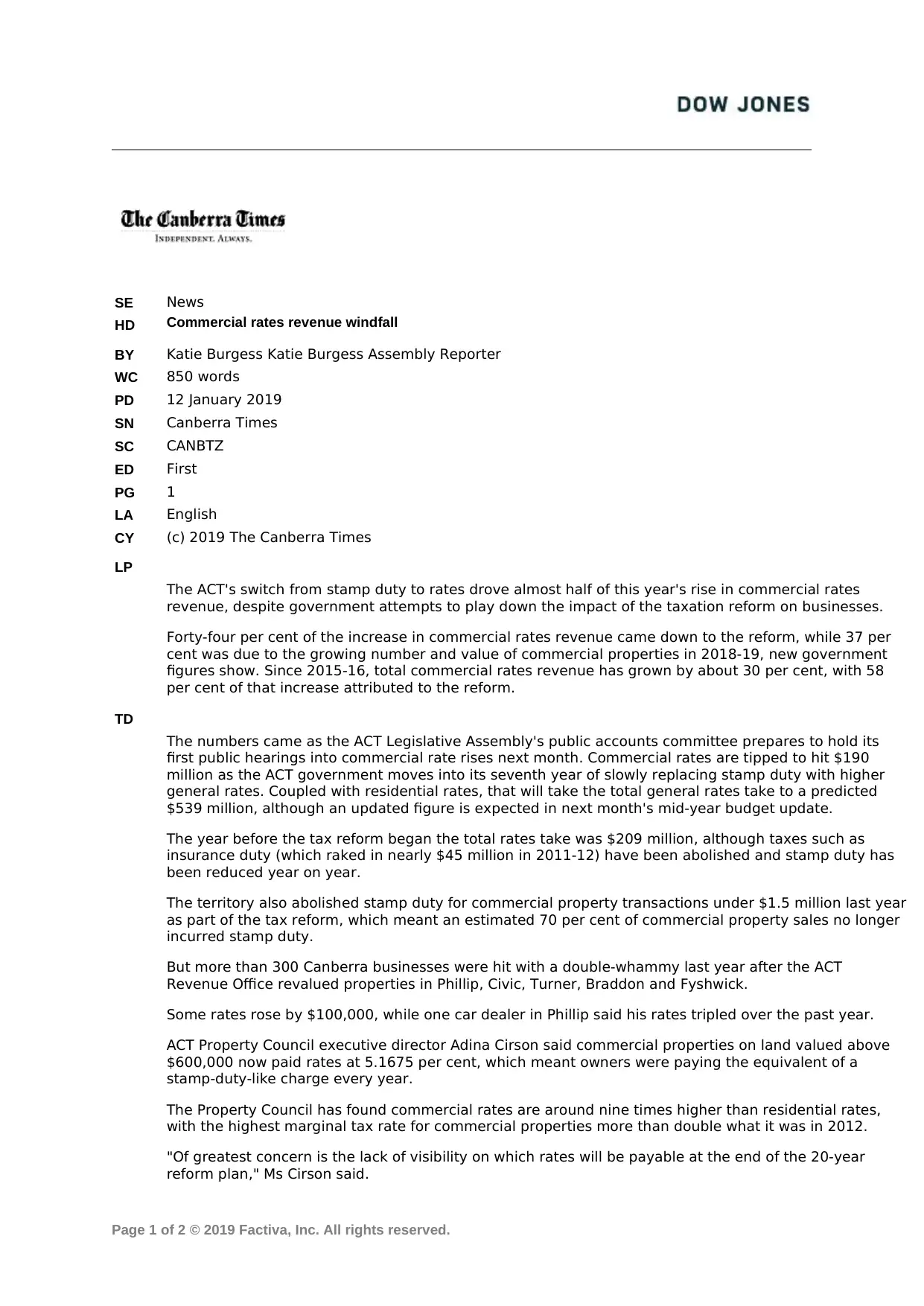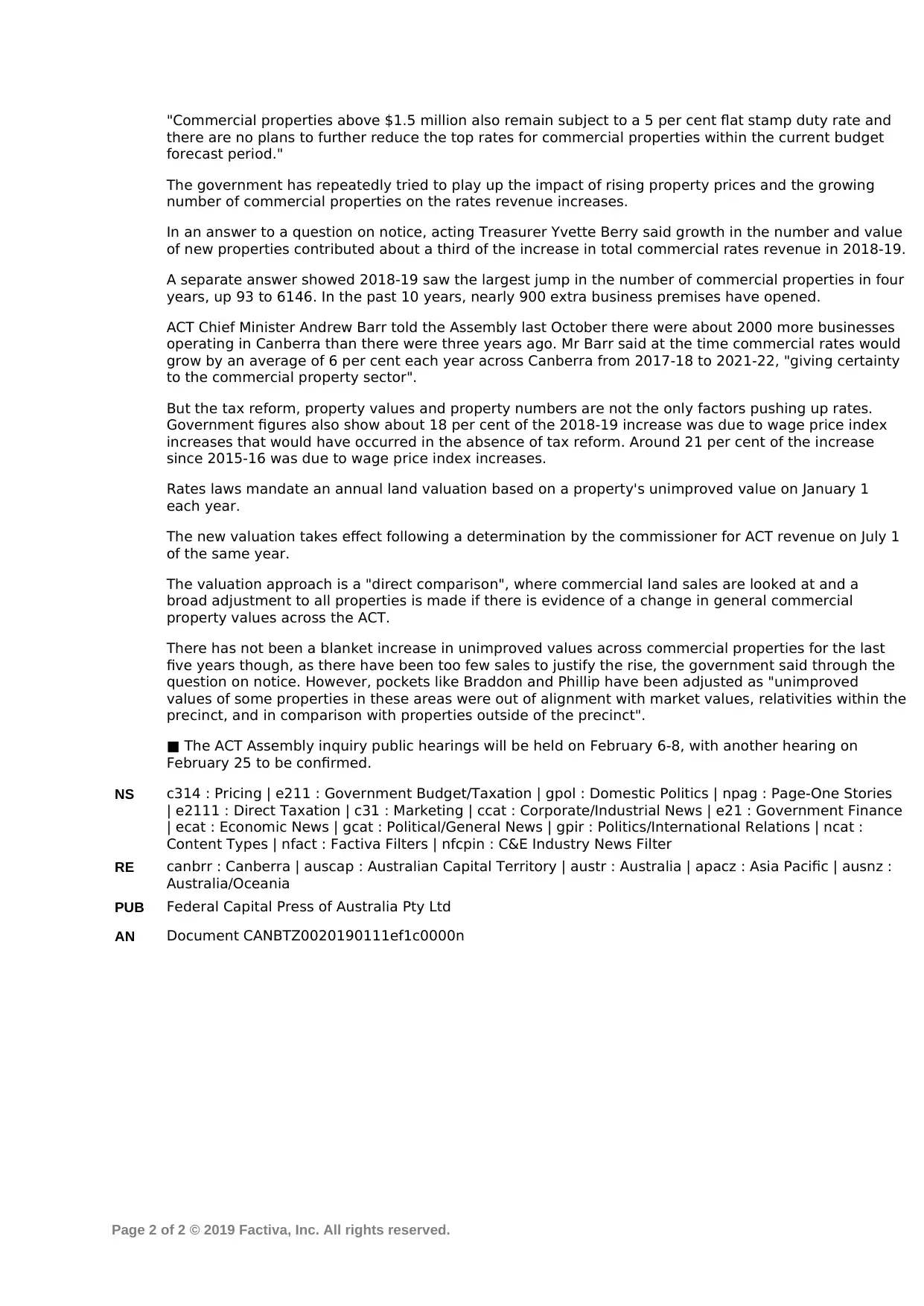ACT Commercial Rates Revenue: Impact of Tax Reform and Property Values
VerifiedAdded on 2023/03/17
|2
|1070
|29
Report
AI Summary
This report analyzes the factors contributing to the increase in commercial rates revenue in the Australian Capital Territory (ACT). The ACT's shift from stamp duty to general rates has significantly impacted commercial rates, accounting for a substantial portion of the revenue growth. The report highlights that the rise is also influenced by the increasing number and value of commercial properties. Data from government figures and insights from industry experts like the ACT Property Council are included, which reveal the complexities of the tax reform and its effects on businesses, including specific examples of rate increases for certain properties. The report also discusses the role of wage price index increases and land valuation processes in driving up rates. It emphasizes the importance of understanding these elements for businesses operating in Canberra, and it concludes by referencing the upcoming public hearings on commercial rate rises by the ACT Legislative Assembly's public accounts committee.
1 out of 2




![[object Object]](/_next/static/media/star-bottom.7253800d.svg)